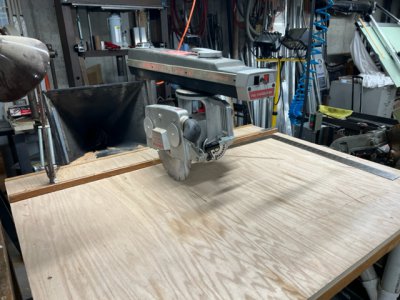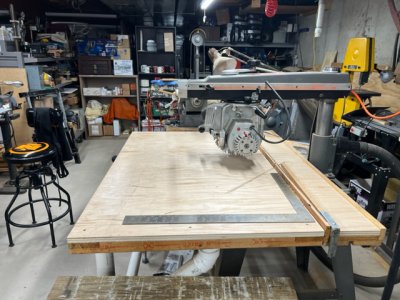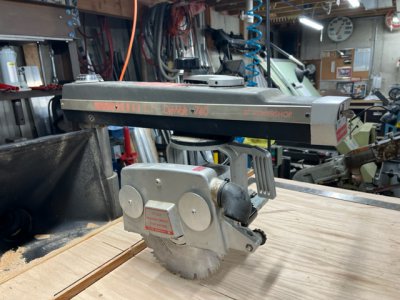- Joined
- Apr 14, 2014
- Messages
- 3,542
Here are some pictures of the 10" Dewalt saw that's going into semi-retirement. I've had it for almost 50 years, and it's done yeoman's work for the majority of that time. It was used to build 2 houses, a number of pieces of furniture, a large deck, the last iteration of pier decking, and lots of other projects. It was even used to cut bricks when we built the patio at our first house.
It's gone through a couple tables, and dozens of blades. It's time to let it do the easy stuff and leave the grunt work to the new kid on the block. As you can see it's considerably lighter duty than the newest acquisition and works great for smaller projects. Rather than strain it to the edge of its ability one more time I'll put the newer, larger saw to work.
It's gone through a couple tables, and dozens of blades. It's time to let it do the easy stuff and leave the grunt work to the new kid on the block. As you can see it's considerably lighter duty than the newest acquisition and works great for smaller projects. Rather than strain it to the edge of its ability one more time I'll put the newer, larger saw to work.




